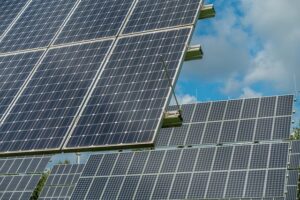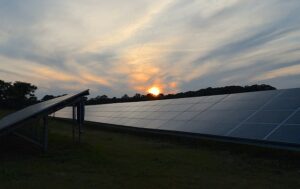
Solar Panels vs. Traditional Energy Sources: A Comprehensive Comparison
In recent years, the debate over energy sources has intensified, with increasing attention being directed toward solar panels as a viable alternative to traditional energy sources. As the world grapples with the urgent need to reduce carbon emissions, energy efficiency, and sustainability, the comparison between solar panels and fossil fuels, nuclear energy, and other conventional sources becomes increasingly relevant. This article aims to provide an in-depth analysis of solar panels and traditional energy sources, exploring their advantages, disadvantages, environmental impact, costs, and future prospects.
Understanding Solar Energy
Solar energy is harnessed from the sun’s radiation using solar panels, which convert sunlight into electricity. This renewable energy source is characterized by its abundance and sustainability. Solar panels consist of photovoltaic (PV) cells that generate electricity directly from sunlight, while solar thermal systems capture heat from the sun for use in heating water or buildings.
Traditional Energy Sources Explained
Traditional energy sources primarily include fossil fuels (like coal, oil, and natural gas), nuclear energy, and hydropower. These sources have been the backbone of electricity generation for decades, providing reliable and efficient energy. However, many of these sources are finite and come with significant environmental and societal costs.
Fossil Fuels
Fossil fuels have historically been the mainstay of energy production. They are burned to create steam that turns turbines in power plants, generating electricity. However, fossil fuels are non-renewable and contribute significantly to air pollution and greenhouse gas emissions, which drive climate change.
Nuclear Energy
Nuclear energy is generated through fission, the process of splitting uranium atoms to release energy. It produces large amounts of electricity with very low greenhouse gas emissions. However, concerns about nuclear waste disposal, catastrophic failures (as seen in Chernobyl and Fukushima), and high initial construction costs present significant challenges.
Hydropower
Hydropower utilizes flowing water to generate electricity. It is a renewable source of energy and produces no direct emissions. Nonetheless, the construction of dams and alterations to waterways can have devastating ecological impacts and displace communities.
Advantages of Solar Panels
Solar panels bring unique benefits to the energy landscape, appealing to both environmental concerns and economic considerations.
Renewable and Sustainable
Solar energy is abundant and sustainable, making it a reliable long-term energy source. Unlike fossil fuels, which will eventually be depleted, sunlight is available every day, providing an ongoing resource for energy production.
Low Environmental Impact
Solar panels have a much lower environmental footprint compared to traditional energy sources. Their operation produces no emissions, and although there are environmental concerns related to manufacturing and disposal, advances in recycling technologies are reducing these impacts.
Energy Independence
By investing in solar energy, countries can decrease their reliance on imported fuels. This energy independence enhances national security and stability while potentially lowering energy costs for consumers.
Cost Savings
The cost of solar technology has dropped dramatically in the last decade. As installation prices continue to decline, more households and businesses can afford to switch to solar energy, leading to reduced electricity bills and even profit opportunities through net metering.
Challenges Associated with Solar Energy
Despite its numerous benefits, solar energy has several drawbacks that need consideration.
Intermittency
Solar energy production is subject to weather conditions and time of day. Energy generation is highest on sunny days and during daylight hours, leading to challenges in maintaining a steady energy supply without sufficient energy storage solutions or hybrid systems.
Initial Investment Costs
The installation of solar panels can still require a significant upfront investment, even with declining costs. While government incentives and financing options help, the initial capital can be a barrier for many homeowners and businesses.
Space and Location Limitations
Solar panels require ample space and a suitable location to be effective. Roof orientations, geographical conditions, and local regulations can limit the practicality of solar installations for certain properties.
Environmental Implications of Traditional Energy Sources
The extraction and use of traditional energy sources come with severe environmental consequences that significantly impact the planet.
Air and Water Pollution
Fossil fuel combustion releases a plethora of pollutants, including carbon dioxide, sulfur dioxide, and nitrogen oxides, contributing to air quality issues and health problems. Oil spills and coal mining also cause catastrophic harm to water bodies and ecosystems.
Greenhouse Gas Emissions
Fossil fuels are the largest single source of greenhouse gas emissions globally. The science is clear: the burning of these fuels is a major contributor to climate change, which poses risks to weather patterns, sea levels, and biodiversity.
Nuclear Waste Issues
Nuclear energy generates high-level radioactive waste, which requires secure storage for thousands of years. The long-term implications of nuclear waste disposal remain unresolved, raising concerns about the future viability of nuclear power.
Cost Comparison: Solar vs. Traditional Energy
When evaluating the economic feasibility of solar energy versus traditional sources, several factors come into play. The total cost of electricity, including installation, maintenance, and operational expenses, must be considered.
Operational Costs
Once installed, solar panels incur minimal operational costs compared to traditional plants that rely on fossil fuels, which require fuel purchase and ongoing maintenance. Over time, the cost of solar-generated electricity can become more competitive, leading to cost advantages.
Long-Term Investment Perspective
Investing in solar panels can yield significant returns over time, particularly when considering tax incentives and the potential for increased property value. Homeowners with solar installations often experience a reduction in electricity costs, enhancing their financial outlook.
The Future of Energy: Trends and Innovations
The energy landscape is rapidly evolving, and the future of solar energy appears promising. Technological advancements and growing international commitments to reduce carbon emissions are driving innovation in the solar sector.
Energy Storage Technology
The development of advanced energy storage systems is crucial for addressing solar energy’s intermittency issue. Batteries are improving in efficiency and decreasing in cost, allowing for better energy management and providing solutions for end users who want to store excess energy for nighttime use.
Smart Grid Integration
As electricity consumption patterns change, the transition to smart grids can enhance the integration of distributed energy sources. Smart grids facilitate real-time communication and management of energy resources, optimizing efficiency and reliability.
Global Market Growth
Solar energy is experiencing exponential growth worldwide, with countries setting ambitious goals to transition to renewable energy sources. Investments in solar technology are projected to continue rising, fueled by falling costs and increasing demand for clean energy solutions.
Conclusion
In conclusion, the comparison between solar panels and traditional energy sources encompasses a wide range of factors, including sustainability, environmental impact, economic considerations, and future potential. While traditional energy sources have dominated the market for decades, the shift toward renewable energy is becoming more pronounced and necessary in light of climate challenges and growing energy demands.
Solar panels represent a beacon of hope for energy independence and environmental stewardship. Although challenges remain in terms of costs, efficiency, and infrastructure, the ongoing innovations in solar technology and energy management suggest a bright future for this renewable energy source. The transition to solar energy, in conjunction with other renewable sources, may pave the way toward a more sustainable, cleaner, and healthier planet.



